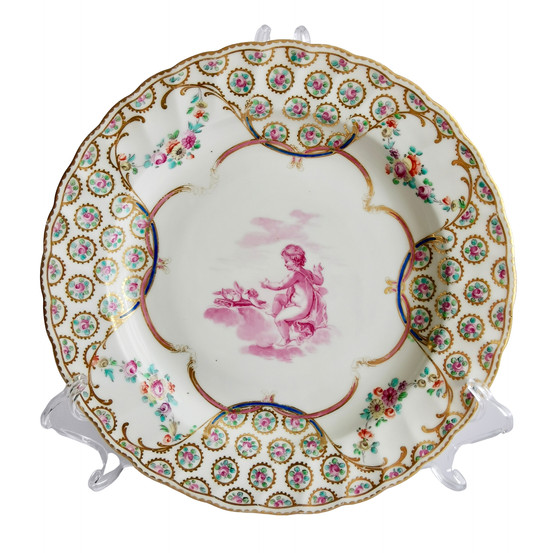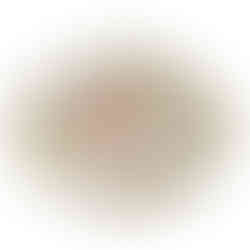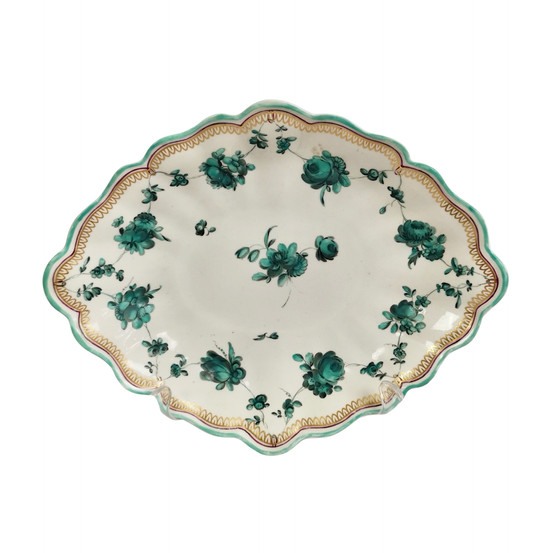Early beginnings
Today I will focus on the first major porcelain factory in Britain: the Chelsea factory in London.

The Chelsea factory was founded in the mid 1740s by Nicholas Sprimont, a Huguenot immigrant from Belgium. He was originally a silversmith among many other Huguenot silversmiths who fled or travelled to London from France and Belgium. Sprimont quickly realised that he could make a bigger mark by starting a factory producing something that was still very new in England: porcelain. And as he was an extraordinarily talented artisan and perfectionist, his factory grew out to be one of the best that ever existed.
The shapes of his items betray that he was a silversmith by training; you can find these shapes in silver items of that era. In fact, his shapes helped determine what we now consider typically English porcelain shapes.
Already in the 18th Century London was host to great differences: the fashionable wealthy West End stood directly opposite the gritty, industrial East End. Today it is not any different, and I am writing this from my stock room in the graffiti-covered East End, full of creatives with no money but lots of new ideas. I am surrounded by little factories, bakeries and breweries. But if you want true sophistication, high end fashion and fancy department stores, you go to the West End.

So Chelsea served the wealthy upper classes who had flocked to West London. They built themselves nice residences close to the river and the beautiful parks, away from the noxious industrial fumes of the East End. And they needed to fill their homes with porcelain. At the time there were crippling wars raging across Europe and that meant that in England people couldn't import porcelain from Germany and France. Sprimont was clever though: he borrowed a huge collection of Meissen porcelain and started creating his own shapes after those wonderful examples.
The Chelsea factory grew out to be a leader in the porcelain industry in every aspect: the porcelain body, the standard of decoration and also the novel ideas for designs. This was expensive stuff for the time: bright colours, gilt, lavish shapes that were difficult to fire. Sprimont spared no effort to make the wealthy London elite buy from him rather than from the European mainland, and he updated his styles several times to keep up with European fashion.
Sprimont was the driving force and creative genius behind the Chelsea factory, and as long as he was alive they did well. But once he died the factory could not survive. It was sold to William Duysbury from Derby, who used the moulds and know-how of the workers to greatly improve his own factory - but that's a whole other story.
Chelsea items are very rare, as production levels were still low in those days, and of course we are talking about items that were made more than 250 years ago. This makes them pricey - but they are worth it for their beauty, high quality and history!
In the meantime, enjoy these beautiful items. At the moment I am lucky enough to have several Chelsea items in stock: a stunning large maroon platter with fabulous birds made in the later years of the factory, and a very charming plate with flowers, made in the early period. I also have one plate from the transition period between Chelsea and Derby, painted with adorable putti by the famous Richard Askew.
Where to find things
You can find my Chelsea items here in my shop, and if you want to find all my available items you can find them here. If you always want to see the latest additions, follow me on Instagram... I post pictures and a story every single day.
Free Copy of Homes & Antiques
Do you want to read an interview with me in Homes & Antiques? Order your free copy here! It has an interview with myself alongside 5 other collectors. And if you want to follow my monthly column where I write about the history of British porcelain, you can take out a subscription.
Wish List ❤️
Don't forget, you can now create your own profile on the site and keep a wish list. Click on the Log In icon at the top right of each page.
Happy weekend 🌸🌻🌷!
This week's new treasures:




































































Comments